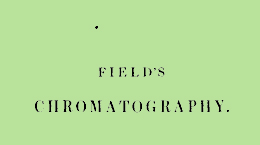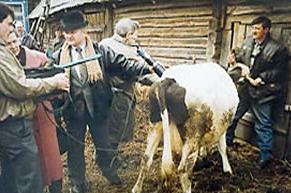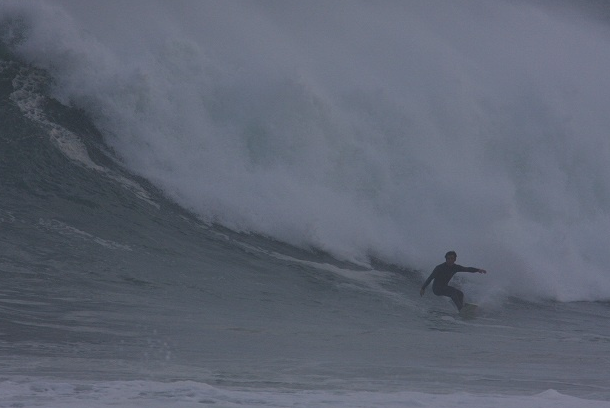This is an extract from George Field’s Chromatography, or, A treatise on colours and pigments, and of their powers in painting (London, 1835). The extract below describes the merits of Prussian blue over Indigo. To create an Indigo using Prussian Blue he suggests saddening it with black and a suspicion of green.

‘In painting, indigo is not nearly so bright as Prussian blue, but it is extremely powerful and transparent, and may be described as a Prussian blue in mourning. Of great body, it glazes and works well both in water and oil. Its relative permanence as a dye has obtained it a false character of extreme durability as a pigment, a quality in which it is nevertheless very inferior even to Prussian blue. By impure air it is injured, and in glazing some specimens are firmer than others, but not durable; while in tint with white lead they are all fugitive. Employed in considerable body in shadow, it is more permanent, but in all respects Prussian blue is superior.
Despite this want of stability, indigo is a favourite colour with many artists, who sacrifice by its use future permanence to present effect. It is so serviceable a pigment for so many purposes, especially in admixture, that its sin of fugacity is overlooked. Hence we find indigo constantly mentioned in works on painting, their authors forgetting or not caring to remember that wholesome axiom, a fugitive colour is not rendered durable by being compounded. Artistically, it is adapted for moonlights, and when mixed with a little lamp black, is well suited for night clouds, distant cliffs. With a little raw umber and madder it is used for water in night effects. With the addition of a little madder it forms a good gray; and with madder and burnt Sienna is useful for dark rocks, this combination, with raw Sienna, being also eligible for boats. For these and other mixed tints, however, Prussian blue saddened by black with a suspicion of green in it, is equally fitted, and is more permanent. Indeed, it would be perhaps justifiable to introduce such a compound, under the name say, of Factitious Indigo.’













